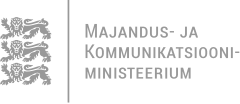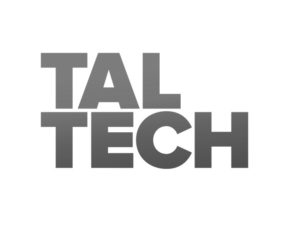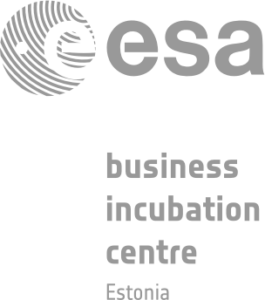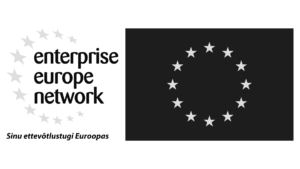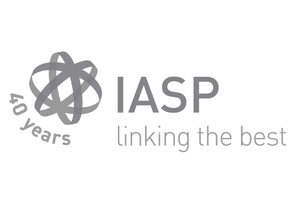04.05.2017
CCHT: Estonian scientists serve tomorrow’s medicine
Tervisetehnoloogiate Arenduskeskus AS (Competence Centre on Health Technologies, CCHT) is a biotechnology company whose research and development activities include personal medicine, drug development and reproductive medicine in both human and veterinary medicine. CCHT has several success stories to show, which contribute to the progress of the future of medicine.
CCHT was born from the initiative of professor Andres Salumets and the work of his research team in 2009. Today, they have developed an organisation that doesn’t only deal with in-depth studies but applied research as well. According to Salumets, CCHT develops research-intensive medical services that are currently not included in the therapy or diagnostics. However, when assessing the future, he predicts that CCHT’s areas of activities will become a part of medicine within the next five years. Prof. Salumets divides his time between several organisations. In addition to CCHT management, he contributes as a professor to teaching new scientists at the University of Tartu and the University of Helsinki as well as to broad scientific cooperation in several places.
CCHT’s research has so far been mostly related with human reproductive medicine, infertility and its causes, for example endometriosis, and the creation of animal breeding technologies regarding veterinary medicine. CCHT has contributed to improvement of several diagnostic technologies related to in vitro fertilisation (IVF).
CCHT success stories
One of CCHT’s success stories, where in an exceptionally short time, a new technology was developed and its rights protected, is the globin-lock technology (GlobinLock®, GL). “Today’s medicine uses relatively little information inherent in RNA; it uses DNA-based information instead. In order to retrieve the RNA-information from a blood sample, it is necessary to suppress the effect of globin. We have developed a technology, which is 30 times cheaper and 10 times faster compared to other solutions on the market designed for this job. This is our contribution to the development of personal medicine, where we still don’t know much today and use very few applications. We do not plan to create a separate service with GL but allow it to be used as an intermediate tool for companies, who offer blood sample RNA extraction and analysis reagents. There are often two bottlenecks in research – one of them is supporting novelty and the other is the budget. Scientifically interesting and meaningful applications are often so expensive that they do not reach conventional medicine because they have to go through the entire chain of validations. We offer solutions that are not based on cheap labour, but on a new technology, which enables making a single stage of work significantly cheaper. This is our contribution to health-care development,” professor Salumets says.
Another example of CCHT’s work is the non-invasive prenatal testing (NIPT) capability. “Delayed family forming and advanced maternal age in developed countries increases the likelihood of fetal chromosomal abnormalities. NIPT enables the detection of fetal chromosomal aneuploidies, with a high degree of accuracy and without any miscarriage risk, by analysing the fetal DNA from the maternal blood samples. During the next two decades, these kinds of blood sample-based tests will become elementary. The launch of CCHT’s NIPT laboratory is scheduled in late 2017. In addition, we have patent pending TAC-seq technology, which should enable carrying out prenatal diagnostics at a lower cost compared to other technologies on the market. TAC-seq has also another application in cancer treatment as a cheap tool improving the tumour relapse detection, when the disease comes back after treatment. Cancer occurrence continues to grow because people live longer. We are not engaged in treatment but develop technologies that help obtain the information at lower costs and faster than it is done today,” CCHT’s development manager Hardi Tamm adds.
Fertify is the new personal medicine tool. “We are engaged in improving the diagnostics and treatment strategies of the infertility problem. It is estimated that about 5-10% of the families need medical assistance in having children. This is a big number and it is expected to grow in the future. This is why we developed a genetic test with the partners, which enables one to determine the length of the woman’s fertility at younger age. Mankind is still learning to use personal medicine solutions, where peoples’ genetic data is analysed in the view of the future, and one is given the information that can be put together based on the big data. Fertify, for example, should help women with the higher risk for premature menopause and age-related infertility. This way we give some people an opportunity to choose the best solutions for family planning,” Salumets introduces.
On the drug development side, one of the most promising lines is the development of probiotic lactobacilli strains: “It is probably familiar to many people that the probiotic bacteria are put into food products. Our subject of investigation is lactobacilli that could fulfil treatment function. The product being developed should restore the patient’s reproductive tract microbiota and helps to cure inflammations. With ongoing clinical trials we should be able to clarify, whether the given human and nature friendly solution could one day be a substitute to antibiotic treatment,” Tamm talks about the developments of CCHT.
CCHT serves tomorrow’s medicine
“Today’s medical market, especially when it is a little more research intensive, is cross-border. All of our services have an international market – we operate in narrow niches and without an international focus it would not be feasible,” Salumets confirms. When talking about future plans, Salumets predicts that in about five years, several research-intensive medical services have been developed – for example genetic studies for reproductive medicine. ”Also we hope that we will be able to use our own patented technologies in cancer diagnostics to prevent tumour relapse. We want to test our new molecular technologies in different medical fields. And I am sure, our in-depth research branch will be maintained, too,” he adds.




